Applications
Imaging invisible or transparent materials
The UVCorder will image invisible or transparent materials such as oils, greases and other organic compounds that have either a high absorbance or a high reflectivity in the UV band relative to the material underneath. For example, traces of toothpaste are highly reflective in the UV band relative to a plastic bathroom countertop, as shown above. These same traces of toothpaste show as darker areas when imaged with a UV fluorescence setup consisting of UV illumination and a 530nm longpass (orange) filter, but the signal is very faint relative to the reflected UV signal. The image shown below was taken with a ¼ second exposure. This long of an exposure requires a tripod to remove shake from the image. This is not practical for rapid evidence collection scenarios.
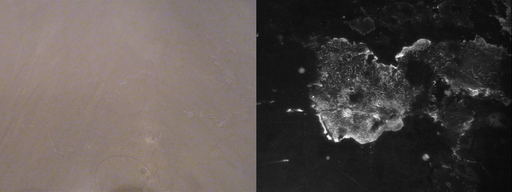
Toothpaste on a plastic countertop. Left-Visible, Right-396 nm UV
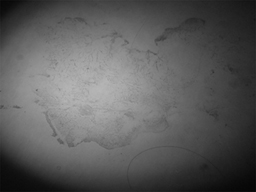
Ultraviolet fluorescence image of toothpaste, ¼ second exposure. The UV source was at 396nm and the barrier filter on the visible camera is a 530nm longpass (orange) filter.
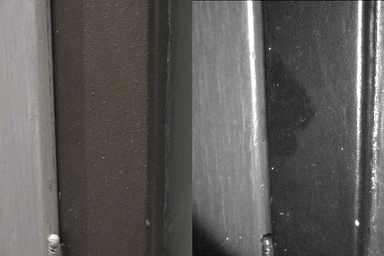
Oil stain on brown painted metal. Left-Visible, Right-UV
The oil stain shown above is nearly undetectable in visible light. I could barely see this stain from any angle with my eye, and photographing it in visible light would be very difficult. But it is easily imaged in the near-UV band.
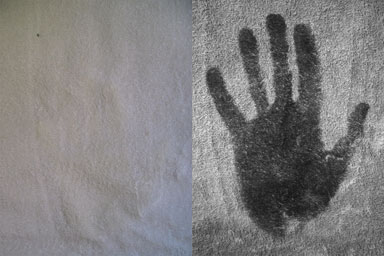
Sunblock handprint on white towel. Left-Visible, Right-UV
Sunblock has strong UV absorbers in it, such as the organic molecule avobenzone. We applied a wet handprint of it to a white towel to demonstrate how traces of organic compounds can be detected in the UV band.
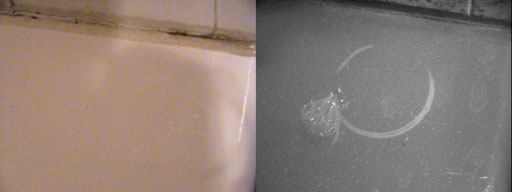
Wax and hair dye traces on the corner of a bathtub. Left – visible, Right – 365nm UV
This is the corner of a bathtub. A candlewax spot was applied by rubbing the tub surface. Upon examination, a ring of UV reflective material was revealed that had previously not been noticed. After examining the contents of the bathroom, a measuring cup that had recently held blond hair dye was found to match the ring diameter exactly.
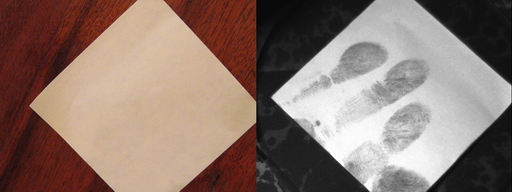
The fingermarks on this post-it note are from moisturizer with some sunblock in it. The marks can also be detected in low light using a UV illumination source to stimulate fluorescence visible to the eye.
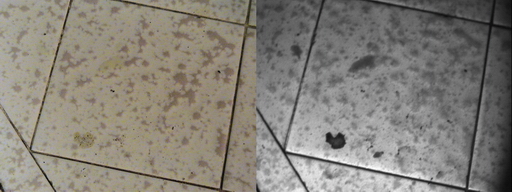
These kitchen tiles have a hard ceramic glaze that reflects UV fairly well. The grease stains absorb UV very strongly, as do other long-chain hydrocarbons.

Yellow coloration appears to absorb UV quite readily. In fact, many UV blocking filters have a yellow tinge to them. The freckle-like pattern in the tile contains yellow flecks that also absorb UV strongly.

UV imaging has been used to detect sulfur deposits in rock.
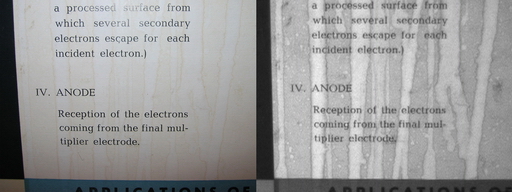
Water stains on the paper are more evident in the UV.
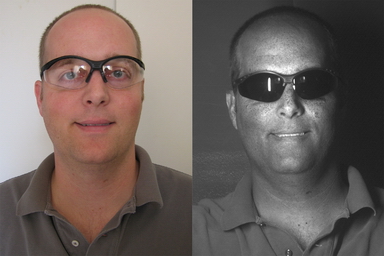
These plastic safety glasses have a UV absorbing coating. Left-Visible, Right-UV
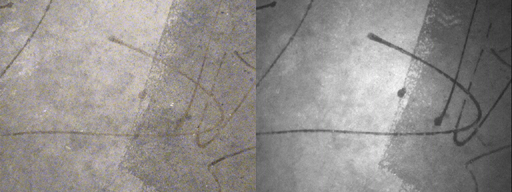
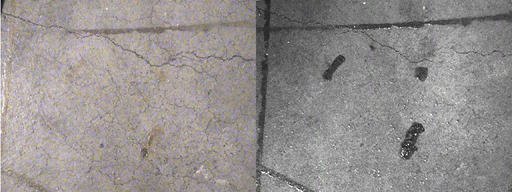
The glue used to hold carpet down to a concrete floor shows strong absorption in the UV band. The UV picture was taken with the room lights on. Since the UVCorder sees virtually 100% UV light, there is no need to reduce the visible-light levels to obtain these types of results. This glue also emits a faint yellow-green fluorescence when stimulated with 396nm UV light, but that UV fluorescence is much more difficult to photograph without using a tripod.
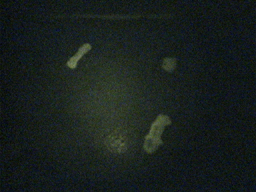
This image was taken with the visible camera on the UVCorder. The lens has a 530nm longpass barrier filter on it to block the 396nm UV stimulation. The fluorescence signal is quite weak, and required that the ambient light be reduced to very low levels and that the UV flashlight be held right against the glue spots.
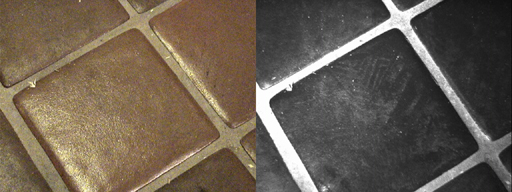
An epoxy resin seal coat applied to a concrete slab was walked upon before it had cured sufficiently. The epoxy footmark shows no fluorescence or visible signature, only a reflected UV impression that identified the person that had walked upon the uncured epoxy.
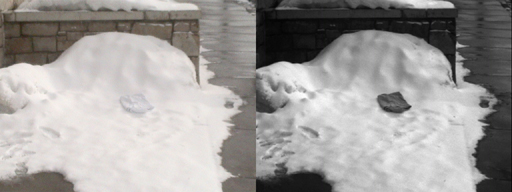
Cotton cloth appears white to the eye, but absorbs UV light, as do other textile fibers. Ice crystals reflect UV light due to the change in refractive index. As a result, many white fabrics used for snow camouflage are defeated by UV imaging, which greatly enhanced contrast. Polar bears and other arctic mammals can be detected this way.
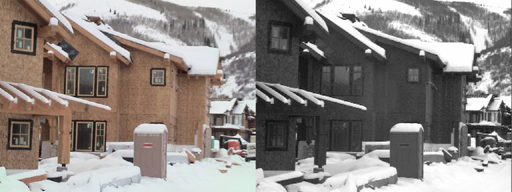
The resins used to make oriented strand board absorb near-UV light strongly. Ice crystals reflect UV light due to the change in refractive index. That is why the contrast is so much higher in the UV image.
|


